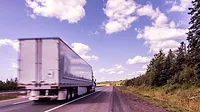Distribution
How to make your beverage fleet insurer ready
Fleets managers can take steps to help minimize insurance costs

Every beverage delivery fleet is insured, but not every fleet is necessarily insurer-ready. It might be the insurance company’s job to cover you in case of an incident, but it’s incumbent upon the fleet to make sure those incidents are few and far between. In the end, it’s all about saving money and the most insurer-ready fleets are going to be the ones securing the most palatable premiums. Here are a few things to consider that will help make that happen.
1. You may not be doing as much as you think…
CarriersEdge, a provider of online training for commercial drivers, offers a bit of insight on some of the common refrains it hears from its partners in the insurance industry.
“The biggest thing we hear insurance people talking about when it comes to evaluating risk in fleets is that they just aren’t doing much of anything,” says CarriersEdge president Mark Murrell. “When it comes to training, they may be doing some, but they’re not doing as much as they could be.”
2. …And what you are doing isn’t always being tracked…
Very often fleets that have instituted some sort of training programming haven’t kept the best records about it. “The main thing I hear over and over again is [for fleets] to please document what they did,” Murrell notes. “When the insurers come in to assess, there’s no documentation to speak of.”
3. …Neither are the trainees.
Not only are too many fleets not tracking what’s being taught in training sessions or how it’s being taught, they might also be phoning it in when it comes to document who is being trained—and for how long. “Even if [the companies] track who attended, it might just be a sign-in sheet,” Murrell says. “But it doesn’t document that they stayed the whole time or learned anything.”
If that session is in a classroom format, be sure to confirm that the attendees stayed for the duration and require testing to gauge what they’ve learned and retained. It’s just as important for the fleet managers to see which test questions the trainees got wrong as it is to make sure they get the most correct.
4. Okay, so you’ve trained everyone. But what happens now?
Fleet managers will be quick to highlight their training program and how many team members have been trained when they’re buying insurance. But they might not be ready for the insurance company’s next question. “A lot of people will put that out that, ‘look at all the training we did,’ Murrell observes. “The insurance company says, ‘great, but what did you do after the training?’”
The key here is take whatever data you’ve gathered during the training process, identify any knowledge or skills gaps in your team, and then tailor ongoing follow-up training to account for such deficits. “There are always going to be people who did better than others,” Murrell says. What are you doing with the people who struggled? When you identify the gap, what are you doing to help build those skills and reinforce the right habits.”
5. You already have most of the tools you need for success.
Telematics, dash cams, electronic logging devices (ELDs) and any other tech you’ve deployed will provide a wealth of actionable data that can help identify potential problems before they happen and correct any behavior that might affect your insurance coverage.
“Put those pieces together,” Murrell advises. “With all of the tech available you can see [potential problems] pretty quickly. But [you need] a process to evaluate, do something [corrective], evaluate what you did, see what’s working and adjust from there.”
Looking for a reprint of this article?
From high-res PDFs to custom plaques, order your copy today!






